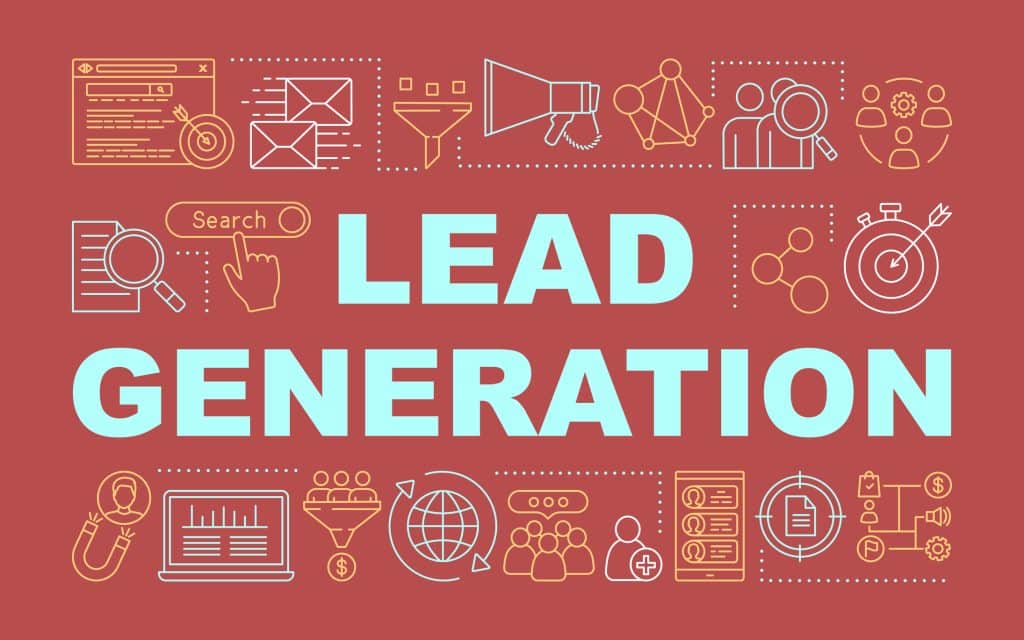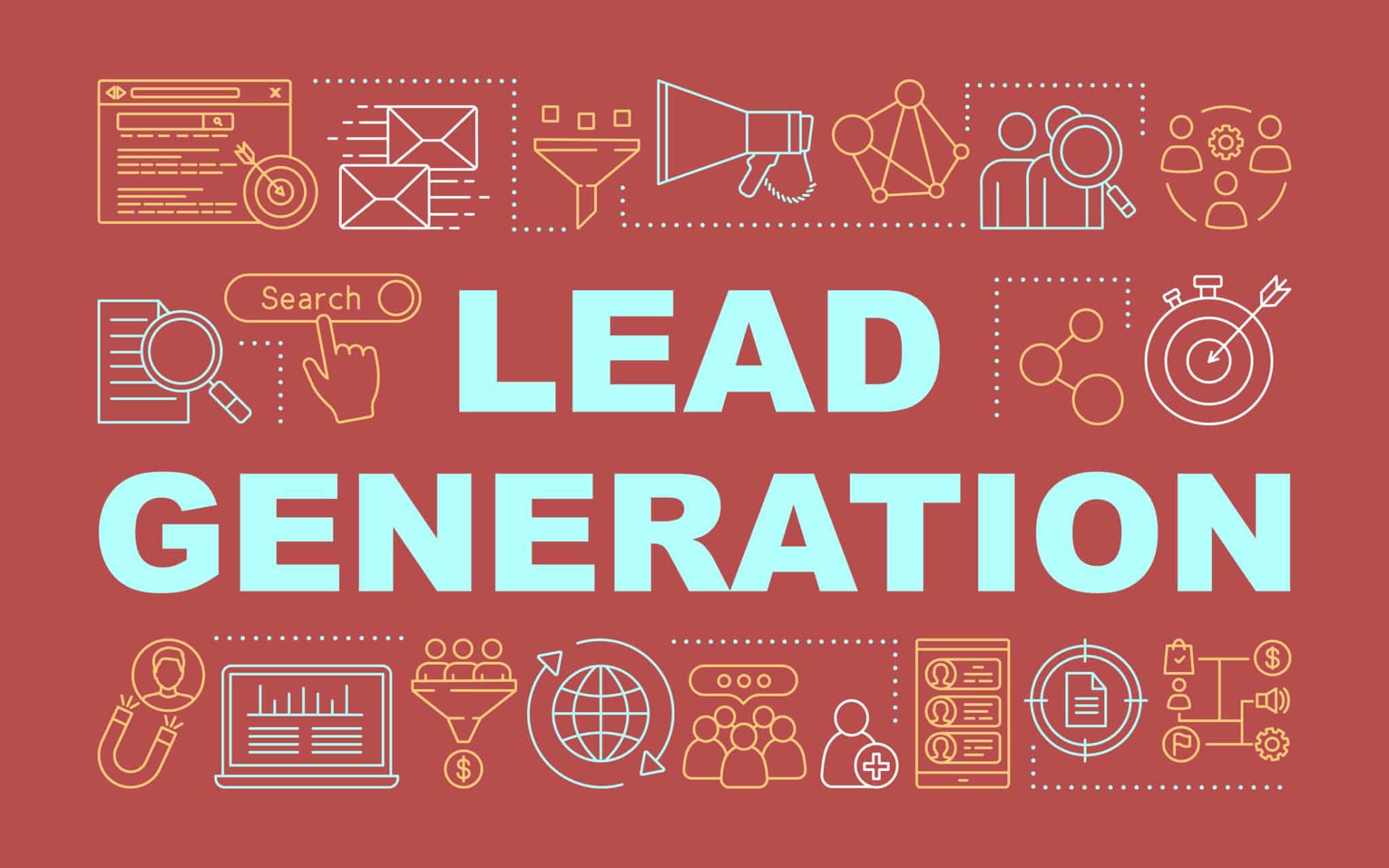88% of customers research potential purchases online before pulling the trigger. These days, digital marketing is everything. If you don’t have a solid digital marketing lead generation strategy, it’s difficult to draw in potential clients.
That’s why we’ve assembled a guide to help you with digital lead generation. Let’s get started!
1. Leveraging Content to Generate Leads
When customers visit your site, what happens? Getting customers to your site is no small miracle these days.
Thanks to the infinite scope of the Internet, getting someone’s attention is a big deal. Getting them to take action—clicking on a link and reading your content—is another step in the right direction.
When someone lands on your site, that’s an opportunity that shouldn’t be wasted. Consider what your calls to action are.
In many cases, getting a functional email address is enough to push visitors further down the marketing funnel. The end goal, of course, is to convert visitors into leads.
However, you need to provide a compelling reason for someone to give you their address. Internet users are assailed with information every day, and their email inboxes are no exception.

People are getting spammed with emails. No one wants to sign up for more useless information. That’s why you need to follow the golden rule of marketing: provide value before you ask for value.
Each stage of the lead generation funnel needs to provide value. The value can’t come once they’re finally a lead or a customer. Instead, you need to give in order to receive.
The goal is to provide a mutually beneficial relationship. That’s where lead magnets come in.
Lead Magnets
When you try to convert visitors to leads, what are you actually giving them? Your target audience knows what they need. In most cases, they’re just looking for the best person to provide it for them.
Here’s how it works. Most lead generation efforts involve the offer of a trade: contact information in exchange for valuable content.
The goal is to receive implicit permission to follow up on the offer. Here are some common examples of lead magnets:
- White papers
- eBooks
- Webinars
- Downloadable resources
- Training videos
- Gated demos
- Bonus tips
- Access to experts
The goal of these lead magnets is two-fold. For starters, you are establishing your credibility and position as an expert in your industry. This solidifies trust: after all, if your free content is this valuable, what could your actual products and services do?
Then, you can follow up on these tools. This is a great way to convert visitors into leads and leads into paying customers.
2. Landing Pages
A crucial part of any lead generation marketing strategy is to create solid landing pages. Your target audience is looking for the best solution, delivered to them in the most convenient way possible.
A landing page helps them determine—often in a few seconds—if they want what you’re selling.
There are often two goals associated with your landing pages. Usually, they are intended to educate potential customers and capture leads. In other words, the intent behind a solid landing page is to push customers down the sales funnel.
There are often two types of landing pages. One is solely focused on generating leads. Often, these landing pages will offer free resources in exchange for contact information.
These landing pages are usually used as a link in paid ad campaigns and so forth. Someone clicks on the ad, and they are taken to a landing page. This page offers a downloadable PDF, for instance, in exchange for their email address.
There are also click-through pages. These are laser-focused on a specific product and service. This type of landing page is trying to sell customers immediately.

Landing Page Elements
There are some key elements to these landing pages that will help you generate leads. Start by deciding on a single call to action. Multiple CTA forms, links, or phrases will only confuse potential leads.
Narrow the focus of the copy down, too. You’re trying to pitch one specific thing. This isn’t the place to write a novel about your products or services.
You should also ensure that the landing page copy delivers on your paid ad campaigns. If your campaign pitches a certain discount or offer, make sure the landing page reiterates it.
Connecting your landing page to your ad source is crucial. You can connect them in a few ways. For instance, what’s the CTA on your ad? Make sure that copy is the headline on your landing page.
You should also make the branding, font, colours, and images mimicked across both sources. This will forge a powerful connection in your reader’s minds.
3. Lead Scoring
Lead scoring is a great way to help you identify how engaged potential leads are. This can help you tailor your approach to their level of engagement.
This starts by quantifying interactions with your brand. For each type of engagement, you’ll add or detract a certain number of points.
Start by writing out all the different types of engagements and qualifiers that make a good lead for your brand. This can help you figure out who is ready to buy, and what they are actually interested in.
Here’s an example. In a typical lead scoring setup, unsubscribing from a list might equal an 8-point deduction. If they download an eBook, that could equal a 5-point addition.
This provides you with valuable data on how responsive your leads are. This will help you zero in on the hottest leads, the ones that are most likely to generate revenue for your brand.
It also helps you tailor your approach. If leads are “cold,” then it’s time to tailor your approach or figure out how to reconnect with them. If leads are hot, there’s no time to waste. They’re looking for a solution, and if they don’t find it with you, it might be elsewhere.
4. Referrals
Part of any good digital marketing strategy is leveraging your pre-existing customers. People tend to trust friends and family over marketing pitches.
Why? Because a marketing pitch comes with an ulterior motive. Even if you truly want to solve pain points for the audience, the goal is the same: revenue.
Friends and family don’t come with that motive. Instead, they’ve tried a product or service and they like it so much that they want everyone to enjoy it. That’s the best type of lead generation that you can get.
Word of mouth is one of the most powerful marketing strategies. Of course, there are indirect ways to get it. Start by creating a top-notch product, followed by an empathetic, knowledgeable customer service team.
Once you’ve taken care of the quality and people factors, it’s time to leverage a referral program.

The goal is to offer value to your pre-existing customers. To start, though, you’ll need to address the significant gap between people who want to refer, and those who actually do.
When it comes to following through, there’s a 53% gap between people who say they will and those who do. That means you need to make it as easy as possible.
Here are some perks you can offer with your referral program:
- Cashback offers
- Special discounts
- Freebies
The sky is the limit.
5. Influencer Marketing
Your target audience already has favourite influencers, celebrities, and key people that they follow on different platforms. That means that you may need to pivot to social media marketing.
This is another way to leverage the referral principle. While people don’t trust celebrities like they do a recommendation from a family member, they still place weight on celebrity recommendations.
When creating a digital marketing strategy, know that generating leads starts with generating interest. That’s what influencer marketing does.
It convinces people that they need your product. It also demonstrates what your product does, how it makes someone look, or how it improves someone’s day. Then, people have the opportunity to connect with your brand.

Leveraging Influencers
Often, influencer marketing comes with a discount CTA. For instance, if you click on their link in their bio, then you’ll receive a 10% discount. Often, the influencer is paid a commission on every sale.
It’s important to consider whom you select. People already have certain associations with different influencers or celebrities. For instance, would you tap one of the Kardashians to do a post on the new tractor you’re selling? Probably not.
But if you’re selling a new cosmetic line or a new lingerie product, the Kardashians might be a great selection. Remember that each influencer brings their own brand, values, and history to your brand.
Make sure their brand and yours blend together. That way, you promote authenticity to your audience.
Creating a Lead Generation Digital Marketing Strategy
When creating a lead generation strategy, it’s important to remember that you won’t achieve results overnight. Instead, lead generation is a cumulative process.
Contact us today so that we can help you scale up your digital marketing efforts!
